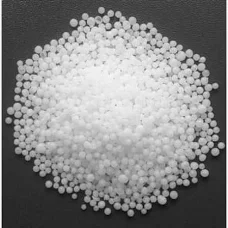
Oct . 22, 2024 08:25 Back to list
NPK Fertilizer Supplier and Manufacturer for Optimal Crop Growth Solutions
NPK Fertilizer Suppliers Understanding the Manufacturing Process
In the world of agriculture, the importance of fertilizers cannot be overstated. Among them, NPK fertilizers have gained immense popularity due to their balanced nutrient composition, which is crucial for optimal plant growth. NPK stands for Nitrogen (N), Phosphorus (P), and Potassium (K), three essential nutrients that play fundamental roles in plant health. As the demand for NPK fertilizers continues to rise, the role of suppliers and manufacturers becomes increasingly significant.
What is NPK Fertilizer?
NPK fertilizers are specifically formulated to provide plants with a balanced supply of the three primary nutrients. Nitrogen promotes leafy growth, phosphorus aids in root development and flowering, while potassium is essential for overall plant health and disease resistance. These fertilizers are available in various formulations, typically represented by three numbers on the packaging. For example, a fertilizer marked 10-20-10 contains 10% nitrogen, 20% phosphorus, and 10% potassium.
The Role of NPK Fertilizer Suppliers
NPK fertilizer suppliers play a critical role in the agricultural supply chain. They source raw materials, manufacture fertilizers, and distribute them to farmers and agricultural businesses. A quality supplier ensures that the fertilizers meet the necessary quality standards and provide the required nutrient balance for different types of crops. Furthermore, suppliers often provide additional services, such as soil testing and advice on fertilizer application, helping farmers make informed decisions.
The Manufacturing Process
The manufacturing process of NPK fertilizers involves several key steps. First, raw materials such as ammonium nitrate, monoammonium phosphate, and potassium sulfate are procured. These materials are then carefully blended in the right proportions to achieve the desired NPK ratio. Depending on the formulation, manufacturers may also add secondary nutrients like calcium, magnesium, and sulfur, as well as micronutrients that enhance the fertilizer's effectiveness.
npk fertilizer supplier manufacturer

After blending, the mixture undergoes granulation, a process that converts the powdery substance into granules, which are easier to handle and apply. The granulation process can involve various techniques, such as using a rotary drum or a pan granulator. Once granulated, the fertilizer is dried, cooled, and screened to ensure uniformity in size and quality.
Finally, the packaged NPK fertilizer is transported to warehouses and distribution centers, ready to meet the demands of farmers. Manufacturers often conduct regular quality control checks throughout the process to ensure that the fertilizers meet industry standards and specifications.
Choosing the Right Supplier
When selecting an NPK fertilizer supplier, farmers should consider several factors. Reputation is paramount; a supplier with a proven track record of quality products and reliable service can make a significant difference in a farmer’s success. It is also essential to evaluate the range of products offered, the ability to customize NPK formulations, and the availability of technical support.
Moreover, sustainability has become an increasingly important consideration. Many farmers today seek suppliers who prioritize eco-friendly practices and provide sustainable fertilizer options. This shift reflects a growing awareness of the environmental impacts of agricultural practices and the desire to reduce chemical runoff and soil degradation.
Conclusion
NPK fertilizers are vital for modern agriculture, ensuring that crops receive the balanced nutrition they need for healthy growth. As the need for these fertilizers increases, so does the importance of reliable suppliers and manufacturers. By choosing the right suppliers, farmers can enhance their productivity, contribute to sustainable agricultural practices, and ultimately secure a better yield. In this way, the collaboration between NPK fertilizer suppliers and farmers not only supports agricultural success but also promotes environmental stewardship.
-
10-10-10 Organic Fertilizer - Balanced NPK Formula
NewsAug.02,2025
-
Premium Organic Manure Compost for Eco Gardens
NewsAug.01,2025
-
Organic 10-10-10 Fertilizer | Balanced Plant Nutrients
NewsJul.31,2025
-
Premium Amino Acid Fertilizer | Rapid Plant Growth Booster
NewsJul.31,2025
-
10 10 10 Fertilizer Organic—Balanced NPK for All Plants
NewsJul.30,2025
-
Premium 10 10 10 Fertilizer Organic for Balanced Plant Growth
NewsJul.29,2025
